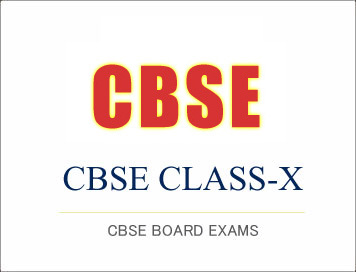
(Download) CBSE Class-10 2016-17 Sample Paper (Tangkhul)
-
Please check that this question paper contains 8 pages.
-
Code number given on the right hand side of the question
paper should be written on the title page of the answer book by the
candidate.
-
Please check that this question paper contains 38
questions.
-
Please write down the Serial Number of the question
before attempting it.
-
15 minute time has been allotted to read this question
paper. The question paper will be distributed at 10.15 a.m. From 10.15 a.m.
to 10.30 a.m., the! students will read the question paper only and will not
write any answer on the answer-book during this period.
Time allowed: 3 hours
Maximum Marks: 90
Khangahan hi akhum mati sada khaira.
A: READING
B: WRITING SKILL
C: GRAMMAR
D: LITERATURE
GENERAL INSTRUCTION:
1. Khangahan saikorg ngahankaserlu,
2. Nana ningkachang ~khum eina haophok paira.
3. Akhum chiwui khangahan saikorg chi meisa eina ngahankalu,
AKHUM-A
1. Mikahai tuikhurkha hi palaga khangahan bing chi A, B, C
kala D wui eina kapangkhuilaga ngahankalu. Longyao eina Kamringphiwui leishi
khangarok hili ningkachang kakharam kala kakahao mazangla kachangkhat leishi
khangarokna da theikhui. Mayar ngala salakhava meisum shim ka.a longshimli
yaothui khangarok hiya leisera. Longyao eina Karru.ngphi leishi khangarokhi
Phungcham preinaosanna ngazekrop eina leikasana. Kamringphi Vareina arong, sam,
phgphor, mailep kala pheithei pangtbei mayut kharirik eina samihai. Chiwui
tungli ngashom ngaror kharnipana acham-aram, achei-arei kala shgngahan katheiwui
vang kharamaosan mateila katongana leikashiva kala khangachanvg shanao akha
sakasana. Longyao Phungcham Vashumwoshi meiphungwui kharara shimkhur akha wui
yarkhoka akha kasawui tungli zakrnaila kala mirinla nganantap eina okthuisa
haoda r£!s£! khaphali khikha hapkakhano maleikapaiya yaronaona. Ani khaniwui
leishat pamngaret kajuili haikhami thai.
Khanghan:
A. Meisumshim kaji hiya kajina.
a. Meisaparn nganaokhavai shim.
b. La tamkhavai shim.
c. Longshim.
d. Ngalanao khalei shimli yaronao yaothuivada pamnganao khavai shim.
B. Khili Longshim sa khala?
a. Shim kahakli kahangna,
b. Longnao pikhavai shimli kahangna.
d. Awor tamkhavai shimli kahangna.
c. Bichar sakhavai shimli kahangna.
C. Kamringphi ngala khamatha phaphor khaung tungli ngashom
ngaror khami chi khikhala?
a. .acham-aram
c. shangahan khamatha
b. achei-arei
d. katonga hi zangsera.
D. Longyao mayar khamatha tungli mirinla nganantap eina
okthuisa haoda rasa katha kaphali khikha hapkakhano maleikapaiya yaronnaona kaji
hili 'nganantap eina' kaji hiya _
a. mavatlakla kajina.
c. Ringshilak eina kajina.
b. rnawunnap eina kajina.
d. hekmaheilak eina kajina.
E. Longyao eina Kamringphiwui Ieishat pamngaret kajuili
haikhami thai kajiwui kakhalatva ---------
a. kashunglaka kajina
c. ani chalaka kajina
b. katongana theisera kajina
d. ani juilaka kajina.
2. Kasa Akhavana apuk apakva semchang hailaga okathuili
mangla kapaiya eina chipemhaida shiri-shira, sayur-vayur kala mungkhavai
mikumoli chip am kahai thili, atam ngachak khavai athurnwui ningkachang
sakhuiranu chihaoda mangla kapaiya saikorali ngahotlaga kaphaning ngahanuwa.
Hunakhava masikthat kahai thahaowa khipanakha khak mashokthua. Khaleilaga kafa
mikshana hithada hangshokrasai, kumkha ngashunsa kumkha ngayasa, Chi kasha eina
yarui ngayeirei haowa. kathada kumkha mangasamlakla otsa kala kumkha pira
khalada ujjina rnamayaphut thua. Kha ala hithasa kajila mahangsangthua. Kasa
Akhavala kafa wui chi sakapai ot maningmana jihaowa. Saikora chi varilui haowa.
chitharan thingtonli mashonshei eina pakasa chaklenna hithada hangshokrasai.
Kasa Akhava kafawui chiya ithum masararmara, iwui kaphaningle hunakha chotshap
otsa, hunakha kachot vanshap ngasamkhui kajina phameira. Kasa Akhavana awui
thangkhameichi theilaga ali marankhame saranuda somihaowa. Chiwuivang eina aj~
rashungda mikumola chaklen khon khanganana kala thang zimikkha hi
ngashun-ngayada khai kahaina. Kafala avaishatshat eina leikhurli ayamsang haida
arui rashungda thingngayung phashailaga kahor kaho matheila okthuida khaleina.
Khangahan: (1 x 5 = 5)
A. Kasa Akhavana okathui hi shiri-shira, sayur-vayur kala
mangla kapaiya ayayav~ chipem hailaga khipali mungngasak khala?
a. Kazingkhali
b. Shangkhgli
c. Kazingraoli
d. Mikumoli
B. Kasa Akhavana okathuihi horkhavai zimik semhailaga
khiwuivang tangkhamang ngaya leingasak khangai?
a. Ngamiting haida ot masapai khavai
b. Ngashun sana kahai chi suita khavai.
c. Ngasamkhui khavai.
d. Ot masapam shonpai khavai.
C. Kafali miksha kaho hi awui amik - -
--------------------
a. Khamathingwui vangna.
c. Makhamathingwui vangna
b. Kateowui vangna.
d. Kahakwui vangna.
D. Kafana hithasa kaji hili mamayangai meikap kajipa chi
ujjina. Ujji hi
a. Varana
b. Vareina
c. Sarcina
d. Sateona
E. Kasa Akhavana awui theithangkhamei chi theilaga ali
maran khame saranuda somihaowa. Hili "thangkharnei" kaj i tui hi grammar eina _
a. Noun hoi
b. Pronoun hoi
c. Adjective hoi
d. Adverb hoi
3. Ihaowui phanitbingwui ngachaili akhamang kaji shanaona
shar kasa phanit chiya Chumphana, Chumpha hiya zingkum chiwui heiwun chumli
ungkazipser hailaga khuizaphokuga kaji eina zaramei khavai kasa Akhavali
mingkazai phanitna. Shanaowui shar sathuda mayarnao shimli pamshara, zeikhai
ngaha, khalen, kapa kathathala numneishara jihaida khararli ahaiser haowa. Varan
kaji mayarnao saikora khavaknao ngakom khuingarok laga luili arnorsong laga
lumshilao asathaiya. Shimshong preivangarana rakhong khonhailaga ungngarung
kadhar "sora" asokkhuilaga chieina phahanguwa laga gahara ngarana khaireo av£
eina ava chi mali zangkotphumhai, zamkhor zangzang, mahawui khaikao, hanshi eina
hanglaga chumli zangphaphayaya, Chumkhot luk eina ma khayamkhuida maphuikha
chithang khuiphok haowa. Hithada shar saki kaji kupser kahai eina khongnai prei
ngakomkhui ngaroklaga athumla lumlaophup phashak phaza laga lumlaothaiya.
Khangahan: (1 x 5 = 5)
A. Zaramei khavai kasa Akhavali mingkazai phanitna. Hili "zaramei'tkaji
hiya kajina. -----
a. Kachungkha zakhavai
b. Kakan mangava khavai
c. Kanshimei khavai
d. Zingkum peikhavai
B. Kalikhada mayamaowui khalen Chumphali shanaowui shar
kasali zangnar haiakha khalen chi --------------
a. Mahaishuna
b. Mamahaithua
c. Makapngaiki jihaowa
d. Shimanhaowa
C. Varan kaji mayamao saikora luili apiser haiakha
kachikatha mayamao shimli taira khala?
a. Naoshinao mang
c. awo kasarnaomang
b. Matailakmara
d. Mayamao naoshinao eina awo kasarnao mango
D. Ihaowui ngashanli shanaona shar kasa hi manglina.
a. Chumphg
c. Mangkhap
b. Mawonzai
c. Luishom
E. Chumkhot luk eina ma khayamkhuida maphuikha chithang
khuiphok haowa. Hili "khayamkhuida" kaji hi kajina.
a. Sankhuiya
c. Homkhuiya
b. Sekkhuiya
d. Mathasek eina f£!sangkhuiya
